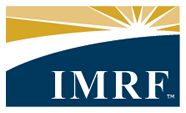Voluntary Payments to Reduce the Unfunded Actuarial Accrued Liability
June 8, 2018
An Unfunded Actuarial Accrued Liability (UAAL) is the difference between an IMRF employer’s actuarial accrued liability and the actuarial value of assets. Employers carry a UAAL if the present value of future benefits it will pay to its employees is not covered by the current amount in their IMRF account.
Reducing the Unfunded Actuarial Accrued Liability
The UAAL can be reduced in three ways:
- IMRF earns more on its investments than its assumed rate of return of 7.5%
- An employer pays the employer contribution rate set annually by IMRF
- An employer makes voluntary payments specifically to pay down their UAAL
The Impact of IMRF Investment Returns on UAAL
IMRF assumes it will earn 7.5% over the long term, and sets employer contribution rates based on this assumption. Because IMRF’s assumption of 7.5% is a long-term assumption, it is unlikely that employers will benefit from any given year that results in a higher rate of return. Therefore, IMRF’s investment returns have a small impact on reducing an employer’s UAAL.
Employer Contribution Rates and UAAL
Each employer receives a Final Contribution Rate Notice in November for the following year that includes their retirement rate broken out into two figures:
- Normal Cost – the cost to purchase a year of service in the current year
- Funding Adjustment – the portion of the employer’s contribution rate dedicated to paying interest and principal on its UAAL. The UAAL carries a 7.5% interest charge.
For employers with the ability to levy property taxes for IMRF contributions, there is an amortization period of 25 years for paying down the UAAL. The amortization period reduces each year until it reaches 15 years, at which time it becomes a rolling 15-year amortization period.
For employers without the ability to levy property taxes, there is a rolling 10-year amortization period for paying down the UAAL.
Because amortization periods become rolling periods, the remaining UAAL is effectively refinanced each year, and theoretically the balance will never be paid off.
Voluntary Payments to Reduce UAAL
While part of an employer’s annual contribution rate goes toward paying down their UAAL, IMRF employers may choose to make additional payments to pay down the liability more quickly. There are both pros and cons for an employer who makes voluntary payments to reduce its UAAL.
Pros
By making additional contributions, an employer may reduce its employer contribution rate. For example, an employer with an $8 million UAAL and an IMRF payroll of $12.7 million would reduce its Funding Adjustment rate from 3.48% to 3.43% with a $100,000 payment. This would result in a reduction in employer contributions of $6,350 on an annual basis. The new UAAL would then be $7.9 million.
An employer may also receive a credit on its annual employer reserve statement if IMRF earns 7.5% on its investments. The reason for this credit is that employers bear the risks and rewards of investment returns. The amount of the credit is enhanced by the magnitude of the additional employer contribution to pay down its UAAL.
To maximize potential benefits, it is important to make voluntary payments before year-end.
Cons
Because employers bear the risks and rewards of investment returns, if IMRF does not earn its rate of return assumption of 7.5%, employers may be charged for the shortfall. The magnitude of the charge would be based on the extent that an employer had made an additional contribution to pay down its UAAL.
Questions?
If you have questions about the pros and cons of making additional contributions for your employer, when it’s best to make a voluntary payment, and when the potential benefits would be realized, please contact IMRF through your Employer Access account’s Secure Message Center.

